by Liana Minassian: When stores begin to put out pumpkin-shaped decor and pumpkin-spiced everything…
We are proud to announce a new partnership with John and Ocean Robbins and the Food Revolution to bring our readers Summits, Seminars and Masterclasses on health, nutrition and Earth-Conscious living.
Sign Up Today For the Healthy Brain Masterclass
it’s safe to say that fall is just around the corner. After all, pumpkins are in season in the northern hemisphere during peak fall harvest months — from the end of August through the end of October.
In many places, pumpkins have also become synonymous with the Halloween and Thanksgiving holidays. Some people even believe a Thanksgiving meal isn’t complete without a piece of pumpkin pie for dessert (Guilty!). And in the US, pumpkins are carved and turned into jack o’ lanterns, although the tradition actually started with the carving of other root veggies like turnips, potatoes, and beets.
In the Celtic tradition of Samhain (pronounced “sow-win”), people carved scary faces into vegetables to ward off demons and evil spirits. Upon immigration to the United States, many Celts began using pumpkins instead because they were bigger and sturdier than the vegetables they traditionally carved. Over time, these sources of protection became standard Halloween decorations.
While they may or may not protect you from evil spirits, pumpkins can help protect you from chronic disease. These edible gourds have a number of health benefits and are an easy and affordable way to boost your health and add color to your meals. In this article, we’ll explore the health benefits of pumpkins and how to use them in a variety of sweet and savory dishes.
Types of Pumpkin
Although they’re known for their vibrant orange color, pumpkins actually come in a variety of hues, including orange, yellow, green, blue, white, black, pink, and even multicolored stripes.
Pumpkins also come in a number of shapes and sizes beyond the typical jack o’ lantern style pumpkins you might see at the grocery store or pumpkin patch. They can range in size from a few inches across for mini varieties to a few feet across like the giant pumpkins that are typically seen at state fairs in the United States.
There are four main species of pumpkins: Cucurbita moschata, Cucurbita argyrosperma (formerly mixta), Cucurbita pepo, and Cucurbita maxima.
Cucurbita moschata
The Cucurbita moschata pumpkin variety also includes butternut squash. These are the types of pumpkins that are frequently used to make canned pumpkin. Fun fact — 85% of the world’s commercially produced pumpkin puree is made using Nestlé’s own brand of Dickinson pumpkins called Libby’s Select. Other typical C. moschata pumpkins include Crookneck, Seminole, Calabaza, and Buckskin.
Cucurbita argyrosperma
Cucurbita argyrosperma are also known as cushaw pumpkins. Their shape is more oblong than other pumpkin varieties, and many are green or striped rather than orange. Varieties of C. argyrosperma include Calabacita, Green Striped Cushaw, and Hopi Green.
Cucurbita pepo
Cucurbita pepo is the most common type of pumpkin and the one you’re likely the most familiar with. They’re also known as field pumpkins because they are often grown in corn fields as part of intercropping methods. Field pumpkins typically have smoother skin and are ideal for painting or carving. Some of the most popular varieties are Baby Bear, Munchkin, and New England Pie.
Cucurbita maxima
Finally, there’s Cucurbita maxima, which includes some of the widest diversity of pumpkins and squashes. This is where you’ll get the most color variety and the largest pumpkins. The world record for the largest pumpkin ever recorded was 2,703 lbs from a Cucurbita maxima variety called Werner. Other varieties of this species include Big Max, Dill’s Atlantic Giant, and Cinderella, so named because of its resemblance to Cinderella’s pumpkin-turned-carriage from the Disney film.
Pumpkins Have Been Used for Survival and Medicine
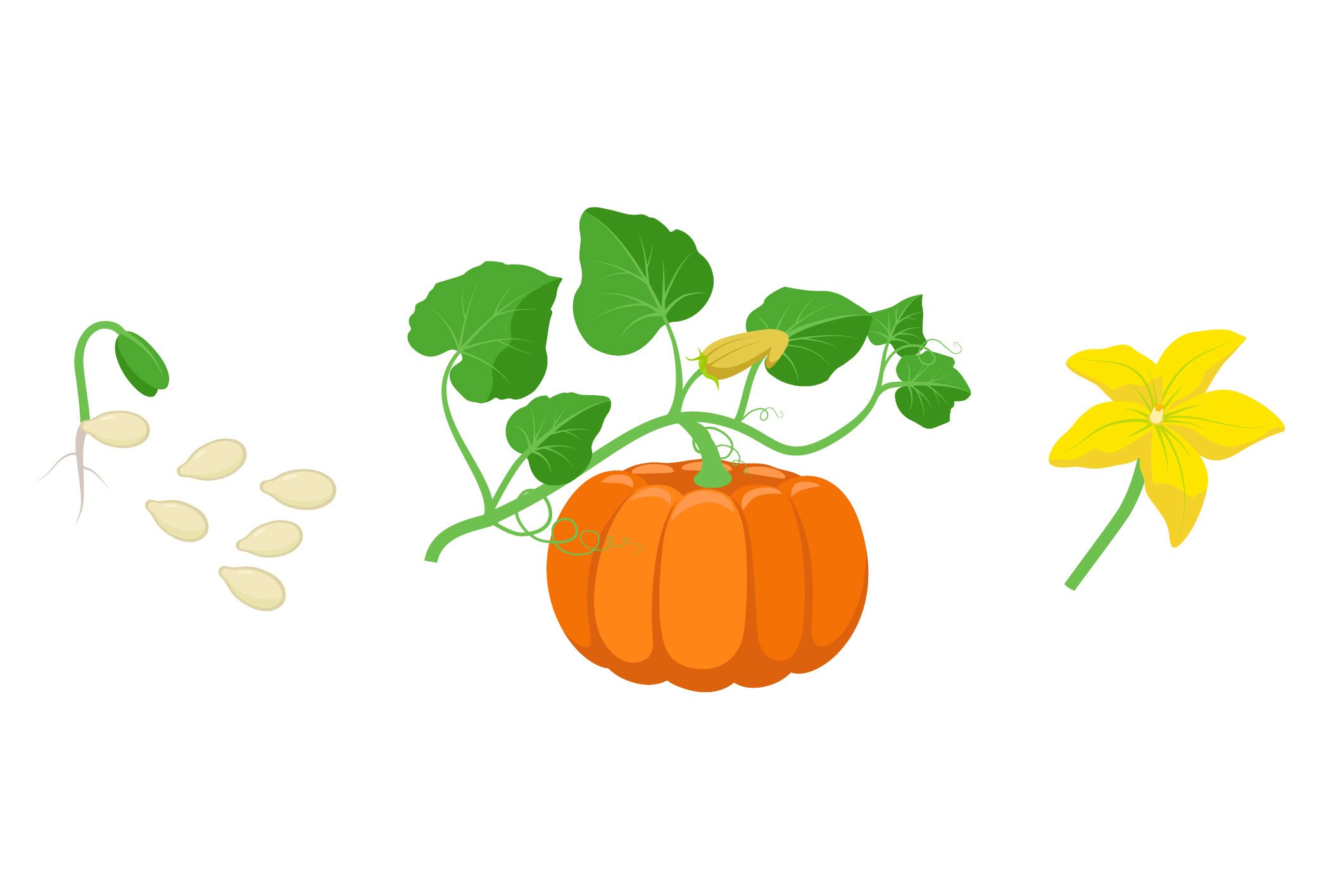
Pumpkins were essential to North American Indigenous diets beginning thousands of years ago. They were one of the earliest cultivated vegetables, with beginnings in the Oaxacan region of Mexico. In addition to the flesh, pumpkin seeds were also eaten and used for their health benefits.
When the pilgrims came to America, pumpkins became a critical and nutritious food for them, as well. Without pumpkins, many of the early settlers might not have survived.
One of the first American folk songs has these lyrics: “We have pumpkins at morning and pumpkins at noon; If it was not for pumpkins we would be undoon.”
Around the world today, most parts of the pumpkin plant, especially the seeds, flesh, and yellow blossoms, are still used in traditional systems of medicine. And many people in the Global South consume pumpkin regularly as a staple food to get a significant amount of the energy and nutrients they need to survive.
Are Pumpkin Seeds and Pepitas the Same Thing?
Pumpkin seeds and pepitas are often used interchangeably, but they’re actually slightly different foods.
Pumpkin seeds are what you might find when you dig into a carving pumpkin or most pumpkin varieties sold at stores. They’re the pumpkin seeds that are sold with their white shells intact.
Pepitas, on the other hand, are a type of pumpkin seed only found in specific varieties of pumpkin originating in the Styrian region of Austria. You can find pepitas in oilseed pumpkins (also known as naked seed pumpkins), which are usually of the Cucurbita pepo variety. These shell-free (they grow that way) pumpkin seeds are used to make, you guessed it, pumpkin seed oil. But the seeds themselves are also a highly regarded snack food and are often found in Mexican cuisine.
Pumpkin Nutrition Facts
Both pumpkin flesh and pumpkin seeds are potent sources of nutrition. Pumpkin fruit is an excellent source of B vitamins and vitamin E, as well as minerals like iron, magnesium, and phosphorous. Pumpkins are rich in phytochemicals like cucurbitacins, saponins, carotenoids, phytosterols, and polyphenols. They also contain vitamin C, potassium, and the carotenoid and antioxidant beta-carotene, which gives orange pumpkins their color.
In one cup of cooked pumpkin, you’ll find the following nutrients:
- Calories 49 kcal
- Protein 1.8 g
- Carbohydrates 12 g
- Fat .2 g
- Fiber 2.7 g
- Vitamin A 245% DV
- Vitamin C 19% DV
- Vitamin E 10% DV
- Riboflavin 11% DV
- Copper 11% DV
- Magnesium 6% DV
- Potassium 16% DV
- Iron 8% DV
And in one ounce of pumpkin seeds you’ll find:
- Calories 146 kcal
- Protein 9.2 g
- Carbohydrates 3.8 g
- Fat 11.8 g
- Fiber 1.1 g
- Vitamin K 17% DV
- Riboflavin 5% DV
- Copper 19% DV
- Magnesium 37% DV
- Phosphorus 33% DV
- Iron 23% DV
- Zinc 14% DV
- Manganese 42% DV
Surprising Health Benefits of Pumpkins & Pumpkin Seeds

Some varieties of pumpkin are gourds, and others are squash. Gourds have a harder outer shell and little edible flesh on the inside, while squashes are more tender and have softer flesh. Believe it or not, a pumpkin is technically a fruit because it starts from a flower, much like a tomato or pepper. But most people consider it a vegetable because of its squash-like flavor, although there are sweeter varieties of pumpkin out there.
Whether you consider it a fruit, vegetable, or both, the fact that it’s either is enough to know pumpkins are good for you. Daily consumption of fruits and vegetables, including pumpkins, is associated with lower mortality rates and chronic disease prevention. But what are the specific health benefits of pumpkins and their seeds?
Let’s take a look at why they deserve so much more culinary attention than just as a holiday pie filling.
1. Pumpkin and Brain Health
The carotenoids in pumpkin flesh may have a powerful impact on your brain.
One in vitro study demonstrated that pumpkin pulp could be protective against mycotoxins crossing the blood-brain barrier, as is seen in Parkinson’s and Alzheimer’s. Pumpkin carotenoid extract was used on cells treated with mycotoxins and the cells showed a reduction in multiple markers of inflammation. It’s possible this may be because pumpkins contain the neurotransmitter acetylcholine, which is found in much lower levels in people with neurodegenerative diseases like Alzheimer’s.
2. Pumpkin and Overactive Bladder Disorders
Urinary dysfunction is a common concern with increasing age. Pumpkin seed oil may help with overactive bladder disorders, specifically nocturia (or waking up to use the bathroom at night). One 2014 study in the Journal of Traditional and Complementary Medicine showed improved bladder function and a reduction in the severity of self-assessed symptoms within 12 weeks when the participants took 10 grams of pumpkin seed oil per day.
Another study on the effect of benign prostate enlargement and urinary retention also showed improvement with pumpkin seed oil. Although you may not want to include oil in your diet, you may still be able to reap these benefits by consuming whole pumpkin seeds with their natural oils intact.
3. Is Pumpkin Good for Your Eyes?
The beta-carotene and other carotenoids found in pumpkin, like lutein and zeaxanthin, are important for eye health.
According to the National Institutes of Health, ½ cup of canned pumpkin contains more than 100% of your recommended daily intake of vitamin A — which aids vision, particularly in dim light.
The lutein and zeaxanthin in pumpkin also protect your eyes from oxidative stress and have been studied for their protective effects on macular degeneration and cataracts.
4. Antimicrobial, Antibacterial, and Antiparasitic Effects of Pumpkin
Pumpkins may also have antibacterial and antimicrobial properties that can help protect against infectious diseases. One 2017 in vitro study found that pumpkin peel and puree extracts showed evidence of preventing the growth and division of bacteria. (They also had the same effect on cancer cells, which we’ll talk more about in the next section). Other in vitro studies also showed pumpkin extracts were effective against specific strains of harmful bacteria, including staph, E.coli, and salmonella.
Pumpkin seeds and seed extract have also been recommended as home remedies for deworming and parasitic infections in both people and animals. Multiple studies have tested the effectiveness of pumpkin seeds and their extracts and shown a reduction in the number of parasitic worms and their eggs. (Our view on the use of animals in medical research is here.)
5. Pumpkin and Cancer
Pumpkin seeds and flesh are packed with antioxidants, and eating both of them often may help treat or reduce the risk of many types of cancer.
One in vitro study on cancer cells of the breast, prostate, and colon found that pumpkin seed extract inhibited cancer cell growth by up to 50% and may be a potential treatment for hormone-related cancers. A similar study on thyroid cancer cells also showed pumpkin seed extract initiated cancer cell death and may also work in conjunction with the chemotherapy drug paclitaxel.
Pumpkins contain cucurbitacin, a type of phytochemical unique to the Cucurbitaceae family of plants. To demonstrate the powerful anti-inflammatory effects of this compound, extracts of Cucurbita pepo were used on colon cancer cells. The result was a reduction in the amount of inflammatory cytokine secretion, which has been associated with cancer cell proliferation and metastasis.
6. Is Pumpkin Good for Diabetes?
Eating pumpkins and pumpkin seeds can have a variety of beneficial effects for people with type 2 diabetes and blood sugar problems.
In one study on critically ill diabetes patients, pumpkin was shown to help reduce high blood sugar levels quickly. Each subject was given five grams of freeze-dried powder from the C. maxima pumpkin species for three days. In those three days alone, blood glucose decreased by an average of 36 mg/dL total. That is a significant amount considering one unit of insulin will drop blood sugar by 50 mg/dL.
A 2013 animal study published in the Journal of the Formosan Medical Association also found that raw pumpkin seeds’ tocopherol content mediated blood sugar levels and improved oxidative stress status and pancreatic markers.
How to Use Pumpkin & Pumpkin Seeds in Recipes
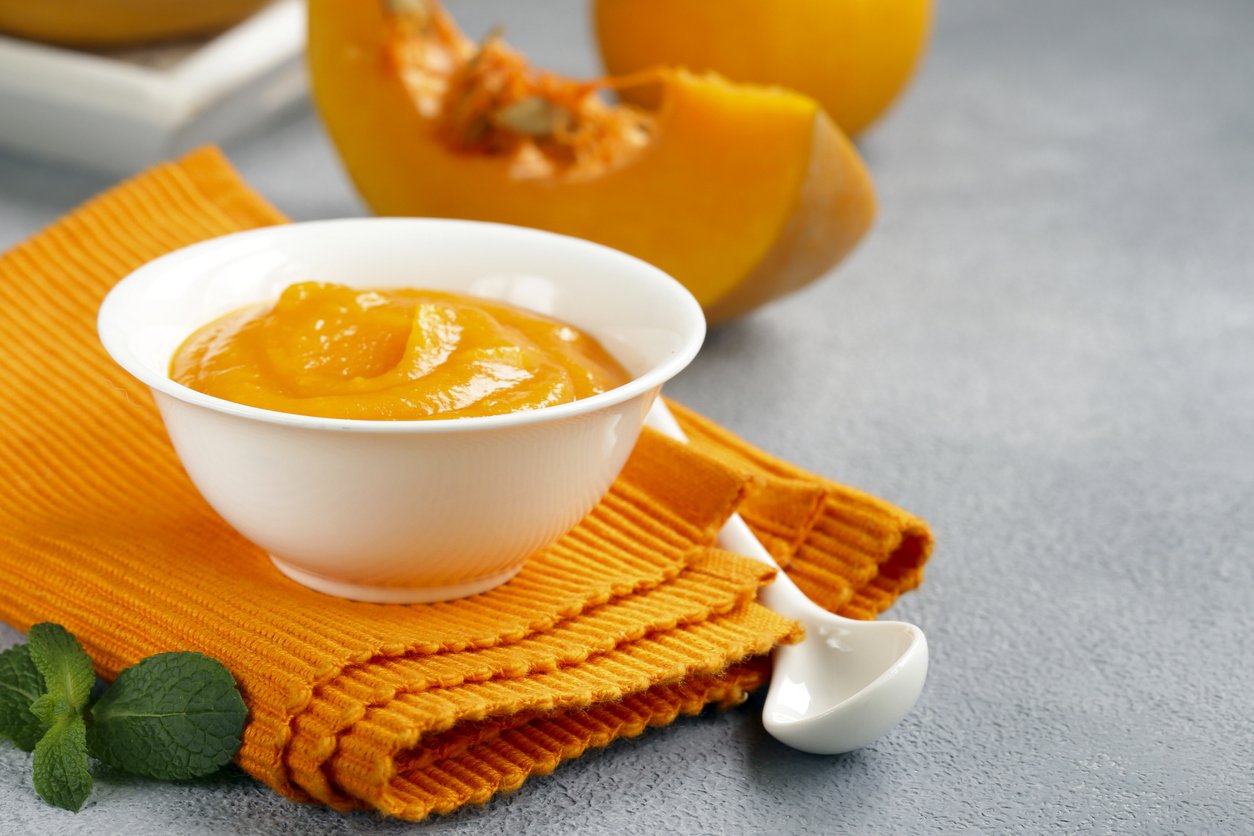
Although they’re convenient, you may want to avoid canned pumpkin or pumpkin pie mixes. Many of them contain added sugars, natural flavors, and other additives. The cans may also have BPA linings, which can leach into the food. If you do want to use canned pumpkin for a recipe, make sure to read the ingredients and look for BPA-free cans.
If a recipe calls for canned pumpkin, you can use fresh pumpkin instead (although you may need to steam or boil it first to get the right consistency).
You can also use substitute pumpkin puree for butter or oil in baking recipes. Using pumpkin in baked goods will give them a moist texture along with a subtle pumpkin flavor (unless you also add pumpkin pie spice to the mix).
Though they’re edible, it’s best not to use the large variety of pumpkin — the orange jack-o’-lantern pumpkins — for baking because this variety is stringy, with less flavor. But you can save their seeds, roast them, and use the flesh in stews and curries as you might use white and sweet potatoes.
The smaller and sweeter “pie pumpkins” or “sugar pumpkins” are best for baking and most recipes. (In the northern hemisphere, you can usually find these in grocery stores from late September into December.)
Pumpkin seeds and pepitas can be eaten on their own as a healthy snack or sprinkled over salads, oatmeal, chia pudding, and plant-based yogurt. You can also use them as a garnish for soups, chilis, and grain bowls. Or bake them into homemade crackers, muffins, and other baked goods.
You can store many uncut pumpkins in a cool, dark place for up to two months after harvest. Once cut, you can store pumpkin in the fridge for four to five days in an airtight container.
What About Pumpkin Spice & Pumpkin Flavored Food?
Come September, many grocery stores and coffee chains start offering pumpkin- or pumpkin spice-flavored products. The pumpkin spice craze seems to have started back in 2003 with the introduction of Starbucks’ Pumpkin Spice Latte (or PSL as it’s often abbreviated). The PSL’s popularity launched a thousand pumpkin-flavored ships with everything from pumpkin spice coffee creamers to the junk food abomination that nobody asked for — Pumpkin Pie Spice Pringles.
While jumping on the pumpkin spice bandwagon might seem like a fun way of getting into the fall season, the reality is that most of these foods are processed and full of added sugar, dairy, flavorings, and colorings. Even if you ask for a dairy-free PSL, without whole milk and whipped cream, Starbucks’ pumpkin spice mix is made with condensed milk.
To add insult to injury, the majority of pumpkin-flavored products don’t even contain any actual pumpkin. Instead, they add caramel coloring (which is made from high fructose corn syrup) and pumpkin pie spices. Even Starbucks didn’t start including real pumpkin in their drink recipe until 2015.
This is not to say that you can’t enjoy pumpkin and the flavors of fall at all. There are plenty of ways to make dairy-free and whole food versions of pumpkin-spiced food and drinks, including the PSL. Below, you’ll find a few delicious recipes made with real pumpkin and pumpkin seeds that are healthy and affordable.
4 Healthy Pumpkin Recipes for You to Try
We love pumpkin, yes we do, we love pumpkin — how about you? In case that didn’t make things obvious, we are delighted to share with you some of our favorite pumpkin recipes.
Starting off with superfood pumpkin seeds, Pumpkin Seed Poppers burst with nutrients, textures, and flavors. Enjoy them solo as an easy and scrumptious appetizer or on top of pasta, salads, or your favorite Italian-inspired grain bowl.
Pumpkin lends a slightly sweet and earthy flavor to an already savory, nourishing bowl of plant-based comfort in our Hearty Pumpkin Chili.
And our Pumpkin Spice and Amaranth Smoothie Bowl is an exciting twist on the traditional fruit-based smoothie bowl. Delicate pumpkin, warm pumpkin pie spice, and crunchy amaranth will have you falling in love with the versatility of pumpkin in no time!
Pumpkin Millet Granola takes a slight departure from the granola you might be used to, but this highly craveable snack (or breakfast) will be all the rage among die-hard pumpkin spice lovers everywhere!
1. Pumpkin Seed Poppers

Get creative in the kitchen with Pumpkin Seed Poppers. These bite-sized appetizers come with plenty of fiber, magnesium, and tryptophan, plus lots of flavor. Pumpkin seeds bring even more to the party since they are a rich source of zinc, B vitamins, and protein. What’s more, these tasty poppers are very fast to prepare when you have leftover brown rice or quinoa, as well as some roasted red peppers on hand.
2. Hearty Pumpkin Chili
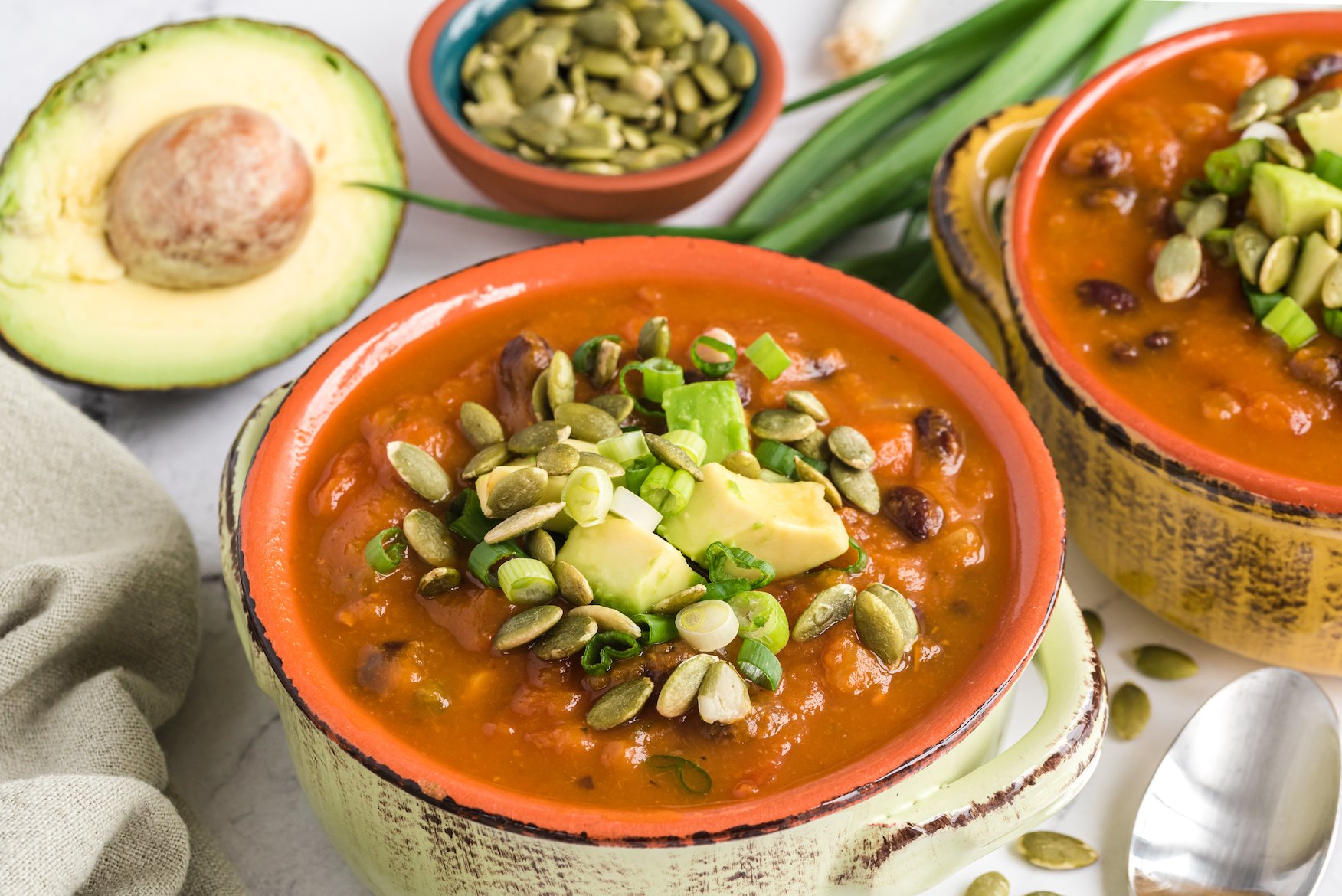
Hearty Pumpkin Chili checks all the chili boxes, plus it goes the extra mile by including nutrient-rich pumpkin. Pumpkin’s sweet flavor and smooth texture stack up well to the heartiness of the beans and the robust acidity of the tomatoes. If you’re a chili lover like us, you’ll appreciate the bold spices, rich texture, and, of course, the surplus of plant-powered nutrients! Go ahead and savor every wholesome, nourishing, delicious, and satisfying bite!
3. Pumpkin Spice and Amaranth Smoothie Bowl
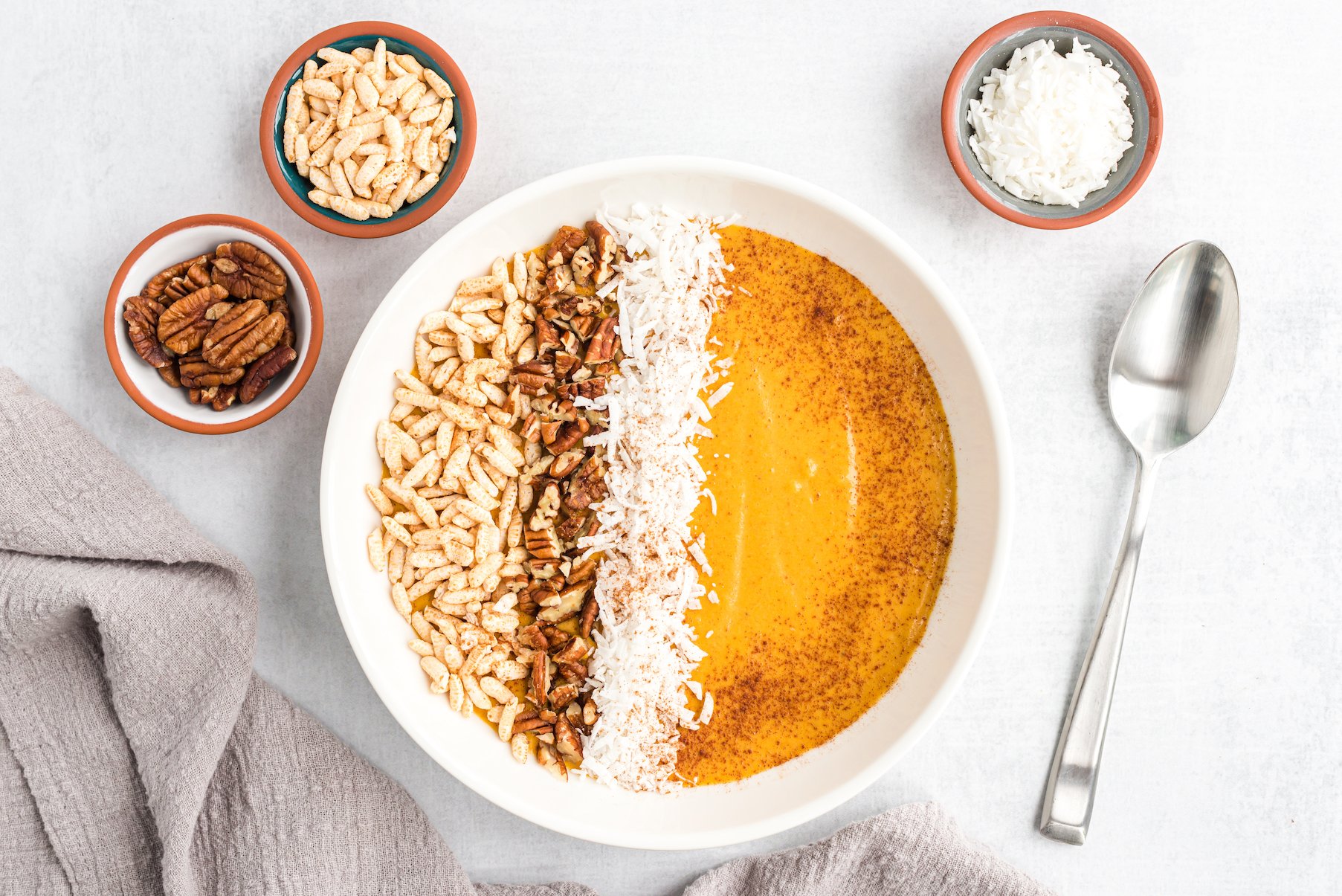
Pumpkin takes center stage in this perfectly spiced Pumpkin Spice and Amaranth Smoothie Bowl. Its beautiful vibrant orange color will have you on the edge of your seat as you dive in for the signature taste of the autumn season. This may sound like the perfect smoothie bowl for the fall season (and it is!), but it can certainly be enjoyed year-round. Pumpkin is chock-full of beta-carotene, B vitamins, and vitamin E, as well as minerals like iron, magnesium, and phosphorus to prime you for whatever the day brings.
4. Pumpkin Millet Granola
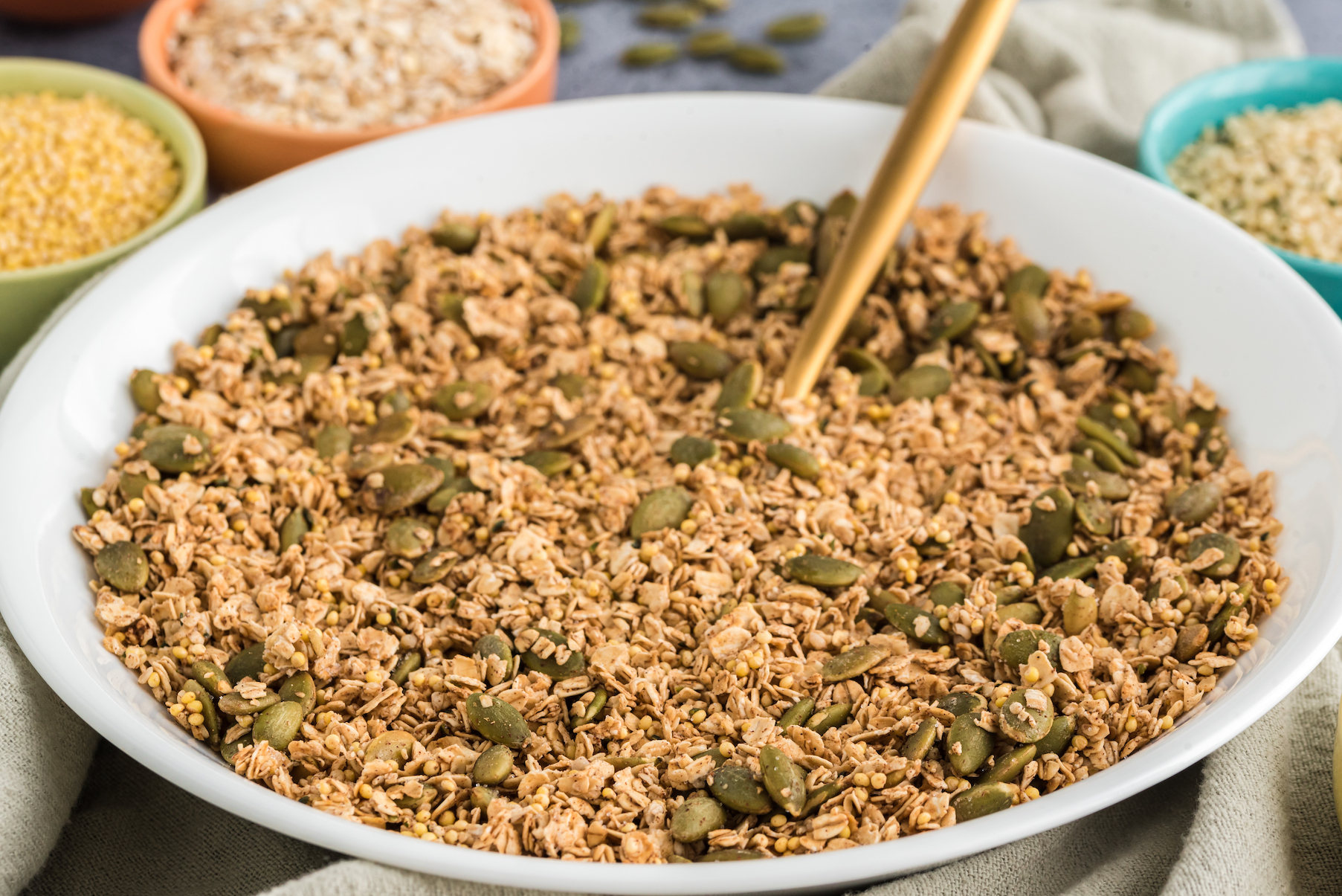
Loaded with oats, pumpkin seeds, hemp seeds, and a touch of pumpkin pie spice, you’ll love having this granola on hand for healthy plant-based breakfasts and snacking. Plus, satisfyingly sweet and crunchy Pumpkin Millet Granola is packed with zinc and magnesium, fiber, B vitamins, and protein. Happy nibbling!
Make Pumpkin Part of Your Meals in a Healthy and Affordable Way
Pumpkins are valuable functional foods with an abundance of health benefits. They’ve been used medicinally and culinarily for thousands of years and across cultures.
Although pumpkin- and pumpkin spice-flavored foods are seemingly everywhere in the fall, it’s best to stay away from the pumpkin-flavored Pringles, Pop-Tarts, and store-bought pumpkin spice lattes. They are all high in sugar and flavorings and may not actually contain any pumpkin at all. Instead, enjoy pumpkins and pumpkin seeds in their whole food form to reap the benefits of their protective nature and scare away chronic and infectious diseases.




















































